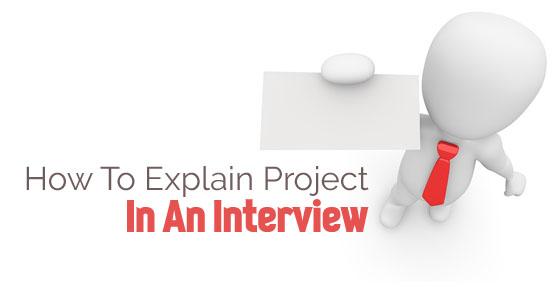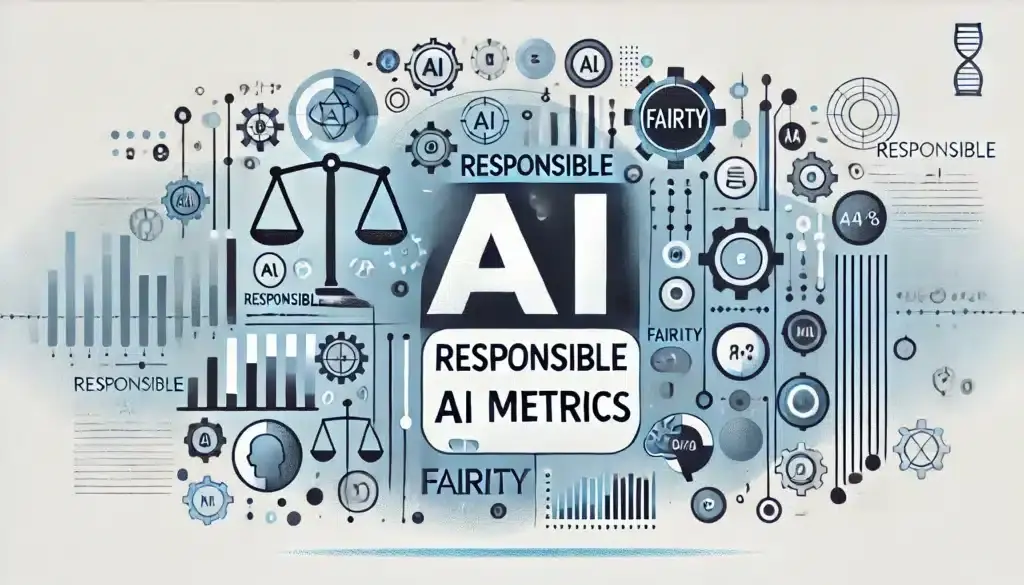The Unseen Forces That Make-or-Break Machine Learning Systems
You’ve trained your model.
It performs brilliantly on test data.
And then… once it hits production, performance drops by 20%.
No code changes. No dataset updates. Nothing obvious.
Welcome to the invisible world of data leakage, drift, and model monitoring, three of the most common, most misunderstood, and most frequently discussed topics in ML interviews.
If you’re interviewing at Meta, Google, Amazon, or OpenAI, chances are you’ll face a question like:
“How would you detect data leakage in a pipeline?”
“What’s the difference between concept drift and data drift?”
“How do you monitor a deployed model over time?”
These aren’t trick questions.
They’re trust questions, ways for interviewers to gauge whether you understand ML as a living system, not a static artifact.
“Strong ML engineers don’t just build models. They build systems that stay intelligent.”
This guide will teach you exactly how to discuss, and impressively reason through, these three topics in interviews:
- What they are
- Why they matter
- How to detect, prevent, and communicate them clearly
Section 1 - Data Leakage: The Silent Killer of Model Integrity
Imagine you’re working on a loan approval model.
You include a feature called “loan repayment status”, because it’s in the dataset.
Your model achieves 99% accuracy.
Except… that feature leaks future information (whether the loan was repaid).
Congratulations, your model just “cheated.”
That’s data leakage: when information from outside the training scope, often future or target-related data, seeps into the training process, giving your model unfair foresight.
How to Explain Data Leakage in Interviews
Interviewers want to see that you:
- Understand leakage as a structural issue, not just a coding bug.
- Can identify its sources.
- Know practical mitigation strategies.
Here’s a clear way to answer:
“Data leakage happens when the training data contains information that wouldn’t be available at inference time, for example, using target-dependent features.
To prevent it, I’d enforce strict temporal validation splits, audit my feature set for target correlations, and simulate real-time inference conditions before deployment.”
Common Sources of Leakage
- Temporal leakage (using future data in training)
- Target leakage (using the label indirectly)
- Preprocessing leakage (fitting scalers or encoders on full data before splitting)
- Data join leakage (merging on unintended keys)
How to Talk About Prevention
“I’d build a feature pipeline that fits transformers only on training data and tracks feature provenance through lineage tools like MLflow or TFX.”
Pro tip for behavioral tie-in
“I once caught a target leakage bug that inflated validation accuracy by 15%. I implemented feature checks in the CI pipeline afterward.”
That short story signals initiative, real-world experience, and debugging maturity.
Check out Interview Node’s guide “Common Pitfalls in ML Model Evaluation and How to Avoid Them”
Section 2 - Drift Detection: How to Explain and Diagnose Performance Decay in ML Interviews
You’ve deployed your model.
It’s been running smoothly for months.
Then, suddenly, your metrics tank, accuracy drops, recall nosedives, F1 collapses.
No code changes. No pipeline errors.
Just decay.
That’s drift, the slow, sneaky, unavoidable process where the relationship between your input data and predictions changes over time.
And every serious ML interviewer will test whether you understand how to recognize, reason about, and respond to drift.
“Drift is not a failure, it’s a sign your model is alive.”
Check out Interview Node’s guide “Mastering ML System Design: Key Concepts for Cracking Top Tech Interviews”
How to Define Drift Clearly in Interviews
When an interviewer asks,
“How would you detect drift in production?”
Your goal is to respond with structure, clarity first, then technique.
Here’s how to frame it:
“Drift occurs when the distribution of input data or target labels changes between training and production.
There are two main types, data drift and concept drift.
Data drift means the features have changed, for example, user demographics or input distributions.
Concept drift means the relationship between features and target has changed, the same input now leads to a different outcome.”
This 3-sentence structure wins interviews because:
- It shows hierarchy of thought.
- It signals system-level awareness.
- It makes you sound like you’ve lived through production decay before.
a. Data Drift - When the World Changes
Data drift happens when your input feature distributions evolve, but the target concept stays the same.
For example:
A fraud detection model trained on 2023 transactions fails in 2025 because:
- Users shop on new platforms.
- Device fingerprints change.
- Spending behavior evolves post-pandemic.
Your model hasn’t forgotten, the world has moved on.
How to detect it:
- Statistical tests:
- Kolmogorov–Smirnov (KS) test for numerical features
- Population Stability Index (PSI) for categorical features
- Embedding drift:
Compare vector embeddings of features over time. - Model-based drift detection:
Train a classifier to distinguish “old” vs. “new” data. If it performs well, drift exists.
How to describe it in interviews:
“I’d monitor key feature distributions with PSI and set thresholds for significant drift. If PSI > 0.25, that’s a strong signal that retraining or feature recalibration might be needed.”
Check out Interview Node’s guide “Comprehensive Guide to Feature Engineering for ML Interviews”
b. Concept Drift - When the Rules Change
Concept drift is more subtle, and far more dangerous.
Here, the input data might look the same, but the underlying relationship between features and labels shifts.
Example:
- During COVID-19, user behavior changed drastically.
- E-commerce models that used “time on site” as a purchase predictor saw performance collapse.
Why?
The concept, what signals intent, changed.
How to explain in interviews:
“Concept drift happens when P(Y|X) changes even if P(X) doesn’t.
In other words, the features mean the same thing statistically, but the world interprets them differently.”
Detection techniques:
- Performance monitoring: Drop in precision/recall is an early sign.
- Window-based validation: Compare model accuracy across time-sliced test sets.
- Adaptive learning: Online algorithms or periodic retraining using fresh data.
Smart follow-up phrase:
“Concept drift often requires a combination of model retraining, feature engineering refresh, and business insight, because sometimes the problem definition itself evolves.”
That last line signals strategic thinking, exactly what senior ML interviewers want to hear.
c. Label Drift - The Quiet Third Type
Label drift happens when the distribution of target values changes over time.
Example:
- In credit scoring, the percentage of “defaults” rises during a recession.
- The model still predicts correctly given inputs, but the label base rate has shifted.
This often throws off threshold-based systems (like fraud detection or anomaly detection).
Interview-ready phrasing:
“Label drift affects evaluation metrics even when the model’s conditional accuracy remains stable. To mitigate it, I’d recalibrate thresholds dynamically and use balanced metrics like AUC or F1 instead of raw accuracy.”
That’s the kind of nuanced phrasing interviewers love, concise, contextual, and system-aware.
d. How to Discuss Drift Holistically
When asked,
“How would you handle model drift in production?”
Combine the three types into one structured response:
“I’d monitor for three kinds of drift —
- Data drift, where the feature distributions shift.
- Concept drift, where feature–target relationships evolve.
- Label drift, where the target itself changes.
For detection, I’d track PSI and KS tests for features, model performance metrics for concept drift, and calibration drift for labels.
Once confirmed, I’d trigger a retraining pipeline with versioned datasets and updated validation splits to adapt the model to new conditions.”
That’s a full-credit answer, elegant, thorough, and interview-ready.
e. Behavioral Angle: How to Discuss Drift in a Real Example
“In one of my past projects, a customer churn model dropped 10% in recall after 6 months.
I investigated feature drift and found the marketing team had changed email frequency, altering user engagement metrics.
We retrained with post-campaign data and added model monitoring dashboards to detect such shifts proactively.”
That one story demonstrates:
- Technical fluency
- Cross-functional awareness
- Ownership mindset
“The best ML interview answers combine system design with human understanding.”
Section 3 - Model Monitoring: How to Explain Real-World ML Maintenance Like a Senior Engineer
Most candidates can explain model training.
Few can explain model living, what happens after the model is deployed.
That’s why interviewers at companies like Google, Amazon, and Meta frequently ask:
“How would you monitor an ML model after deployment?”
They’re not just checking if you know the metrics, they’re evaluating whether you understand ML systems as evolving, data-driven organisms that need observability, feedback, and maintenance.
Let’s break down how to discuss model monitoring like a production-level ML engineer.
a. Start with the Core Idea: Why Monitoring Matters
Here’s a strong, senior-level interview opening:
“Monitoring is about ensuring a model performs as intended in the real world.
It’s not just about accuracy, it’s about stability, fairness, and business alignment over time.”
That one sentence instantly signals you’re not a “model builder”, you’re a model operator.
A good model can perform well on test data, but drift, data quality issues, or changing environments will erode performance.
Without monitoring, these issues go unnoticed, leading to silent business failures.
“A model without monitoring is like a plane without instruments, it might fly for a while, but no one knows if it’s off course.”
b. The Three Pillars of Model Monitoring
In interviews, frame model monitoring around three dimensions:
Data Quality Monitoring
Ensures the incoming data matches what the model expects.
- Check input distributions: Detect schema changes, nulls, outliers, or missing values.
- Tools/approaches: Great Expectations, TensorFlow Data Validation (TFDV), custom anomaly detection pipelines.
Interview phrasing:
“I’d validate incoming features against schema expectations, track drift using PSI, and flag any null-rate or scale anomalies.”
Model Performance Monitoring
Ensures the model’s predictions still align with reality.
- Track live metrics: Accuracy, precision, recall, AUC, but only if labels are available in near-real-time.
- If labels are delayed: Use proxy metrics (e.g., model confidence, output entropy).
- Set up baseline thresholds: If recall drops below X%, trigger alerts.
Interview phrasing:
“Since labels may arrive late, I’d monitor proxy metrics such as prediction confidence variance, and trigger retraining once confirmed drift crosses the threshold.”
Business Metric Monitoring
Ensures model success is measured in impact, not just performance.
Example:
A recommendation model might have 95% precision, but if click-through rate drops, it’s failing the business.
“I’d integrate model metrics with business KPIs, for instance, conversion rate or fraud detection recall, and create dashboards showing both technical and business outcomes side by side.”
This kind of thinking signals end-to-end ownership, a key trait for senior ML roles.
c. How to Talk About Monitoring Architecture
When asked,
“How would you design a model monitoring system?”
…respond with a clear, layered structure.
Here’s a simple, production-minded framework you can use verbatim in interviews:
“I’d build the monitoring layer as part of the MLOps pipeline:
- A data validation service that checks schema and feature distributions.
- A metrics collector that logs inference statistics and prediction confidence.
- A feedback loop to capture ground-truth labels once available.
- An alerting and visualization layer, say via Prometheus + Grafana, that tracks anomalies in both data and performance.
- Finally, an automated retraining trigger integrated into the CI/CD workflow for the model.”
This 5-point outline demonstrates full-system thinking, it shows you know not just the what, but the how.
Check out Interview Node’s guide “End-to-End ML Project Walkthrough: A Framework for Interview Success”
d. Handling “No-Label” Scenarios
Interviewers love to test this nuance:
“What if you don’t have immediate access to ground-truth labels?”
This question differentiates operational ML thinkers from academic ones.
Here’s how to respond:
“In no-label environments, I’d use unsupervised monitoring signals, like distributional drift between training and inference data, or track changes in model confidence entropy.
Additionally, I’d create simulated test environments or canary models that run in parallel to detect deviation without full feedback.”
Bonus: mention delayed labeling windows for real-world cases (fraud detection, credit scoring, ad-click prediction).
e. Behavioral Framing - Showing Experience
To make your answers stand out, anchor them in a real project experience (even if it’s hypothetical):
“In a previous project, we noticed our churn prediction model’s recall dropping by 12% after deployment.
Monitoring logs showed an increase in missing demographic data due to a new user onboarding form.
We fixed it by validating feature schema and setting automatic retraining triggers in our Airflow pipeline. That improved long-term stability.”
That’s a powerful behavioral story. It shows:
- Ownership
- Cross-team collaboration
- Technical execution
f. Bonus - Ethical and Fairness Monitoring
Top-tier companies increasingly ask about responsible ML.
This is where advanced candidates shine.
“Model monitoring also includes fairness metrics, ensuring model decisions don’t degrade disproportionately for specific subgroups.
I’d track performance slices by demographic or region and flag bias drift over time.”
Even a brief mention of fairness auditing or explainability shows you think beyond performance, aligning with modern AI ethics expectations.
Check out Interview Node’s guide “The New Rules of AI Hiring: How Companies Screen for Responsible ML Practices”
g. Interview Summary Structure
Here’s a 30-second, full-credit summary for interviews:
“Model monitoring is about maintaining model reliability post-deployment.
I’d track data quality, performance, and business impact using automated alerts and dashboards.
If drift or performance decay is detected, I’d trigger a retraining workflow integrated into the CI/CD pipeline and validate results through A/B tests before re-deployment.”
That’s the kind of clarity that wins interviews, concise, complete, and confident.
“Great ML engineers don’t just ship models. They babysit them.”
Section 4 - Integrating It All: How to Discuss Data Leakage, Drift, and Monitoring Together in Interviews
When interviewers ask system-level questions like
“How do you ensure your model performs reliably in production?”
they’re not looking for three disconnected definitions.
They’re looking for a cohesive mental model, one that connects data integrity (leakage), model adaptability (drift), and long-term reliability (monitoring) into a living feedback loop.
Your goal isn’t to explain each topic separately, it’s to show how they interact over time within a well-designed ML lifecycle.
a. The Lifecycle Framework: A Continuous Loop
Think of leakage, drift, and monitoring not as stages, but as an ongoing feedback system:
Data Integrity → Model Training → Deployment → Monitoring → Feedback → Retraining → Data Integrity ...
Each stage feeds the next:
- If data leakage slips through → your model is biased from day one.
- If drift isn’t detected → your model decays silently.
- If monitoring is missing → you’ll never even know the decay occurred.
In other words:
“Data leakage breaks your start.
Drift breaks your continuity.
Missing monitoring breaks your awareness.”
This systems-thinking perspective instantly elevates your answer from “textbook” to “senior.”
Check out Interview Node’s guide “Mastering ML System Design: Key Concepts for Cracking Top Tech Interviews”
b. How to Answer Holistically in Interviews
When you get a question like:
“What steps would you take to ensure model reliability post-deployment?”
Use this 5-part narrative structure, it’s clear, logical, and memorable.
Step 1: Prevent leakage before training
“I’d first enforce data integrity during preprocessing, using temporal splits, target correlation checks, and separate transformation pipelines for train and validation data.”
(Signals foresight + MLOps awareness.)
Step 2: Validate and baseline model performance
“Then, I’d create baseline metrics, accuracy, precision, recall, AUC, on a holdout dataset that simulates production conditions. That helps detect future drift.”
(Shows you understand ground truth and reproducibility.)
Step 3: Monitor for drift post-deployment
“Once deployed, I’d continuously monitor input distributions and model outputs for signs of data or concept drift using statistical divergence tests like PSI or KS.”
(Shows real-world monitoring literacy.)
Step 4: Create an alert and feedback system
“I’d set automated alerts when drift or metric degradation crosses thresholds and integrate feedback loops that capture delayed labels for model recalibration.”
(Shows operational maturity.)
Step 5: Automate retraining and governance
“Finally, I’d version both data and models, retrain automatically based on performance triggers, and store evaluation reports for traceability.”
(Signals full ML lifecycle understanding.)
That 45-second summary makes you sound like an ML systems designer, not just a model developer.
You’re not just answering, you’re articulating an entire feedback loop.
c. How to Visually Connect the Three Concepts
If you’re in a virtual or whiteboard interview, sketch this loop:
[ Data Pipeline ]
↓ (validate for leakage)
[ Model Training ]
↓ (set baselines)
[ Deployment ]
↓ (monitor for drift)
[ Monitoring System ]
↓ (alert & feedback)
[ Retraining / Governance ]
↩︎ (revalidate leakage → repeat)
Then say:
“This system ensures that the model not only starts clean but stays healthy, it’s a continuous cycle of validation, detection, and correction.”
Most candidates stop at “detecting drift.”
You’re now talking in terms of feedback governance, which is how staff-level ML engineers think.
Check out Interview Node’s guide “Behavioral ML Interviews: How to Showcase Impact Beyond Just Code”
d. Connect It to Business Context
Senior interviewers always test whether you can align technical quality with business continuity.
Here’s how to do that:
“A model that’s not monitored isn’t just a technical liability, it’s a business one.
Drift in a fraud model could mean real financial loss; leakage in a credit model could lead to compliance issues.
So monitoring isn’t optional, it’s a core reliability function, just like uptime for backend services.”
This shifts your tone from “engineer” to “strategic partner”, the exact level of thinking companies like Google and Stripe expect in advanced interviews.
e. The Behavioral Angle: How to Tell This Story as Experience
If you’ve encountered any of these issues in a project, here’s how to package it:
“In one project, we saw a 10% drop in recommendation accuracy after a feature schema update.
I traced it to preprocessing leakage where a data transformer was fit on the full dataset. We refactored the pipeline to split by stage and added PSI-based drift alerts.
The next quarter, our model stayed stable, and debugging time dropped by half.”
This is a gold-standard behavioral answer. It shows:
- You diagnose issues like a scientist.
- You fix them like an engineer.
- You reflect like a leader.
Key Takeaway
Data leakage, drift, and monitoring aren’t three random ML terms.
They’re the three checks and balances that keep machine learning systems honest, adaptive, and resilient.
- Leakage is about building with integrity.
- Drift is about detecting change.
- Monitoring is about sustaining performance.
If you can connect all three in one structured, clear narrative, you’ll immediately stand out as someone who doesn’t just write code, you build systems that think over time.
“In ML interviews, clarity isn’t about definitions, it’s about connecting the dots between cause, effect, and control.”
Conclusion - How to Bring It All Together in Interviews
When you walk into an ML interview, you’re not just being evaluated on model performance metrics or coding efficiency.
You’re being assessed on whether you can think like a system, one that values integrity (data leakage prevention), adaptability (drift detection), and reliability (monitoring).
These three principles define every production-grade ML system.
But more importantly, they define how great engineers communicate.
When you discuss data leakage, drift, or model monitoring:
- Speak with structure.
- Ground your answers in real scenarios.
- Emphasize why it matters to users and businesses.
“Strong ML candidates don’t just build models, they explain how those models stay correct when the world changes.”
If you can do that, you’ll instantly stand out, because you’re no longer answering like a test-taker.
You’re answering like someone who’s already part of the team maintaining real ML systems.
Check out Interview Node’s guide “The Hidden Metrics: How Interviewers Evaluate ML Thinking, Not Just Code”
FAQs: How to Handle Follow-Up Questions About Leakage, Drift, and Monitoring
1. How do I explain data leakage simply without sounding basic?
Start with intuition, then go deeper.
“Data leakage happens when your model sees information during training that it shouldn’t have access to during inference, like future timestamps or target-related features.
It’s basically when your model ‘cheats.’ Preventing it means treating training like a real-time simulation: what’s unavailable in production stays unavailable in training.”
Bonus: Add a 1-line story, “In one project, I caught target leakage through unusually high validation accuracy. It taught me to always audit feature provenance.”
2. What’s the difference between data drift and concept drift again?
Use this precise phrasing, concise, crisp, and interview-safe:
“Data drift is when the input data distribution changes, P(X).
Concept drift is when the relationship between inputs and target changes, P(Y|X).
In short: the world changes → data drift; the rules change → concept drift.”
That’s a one-sentence, full-credit answer.
3. How can I detect drift if I don’t have access to ground-truth labels?
This is a subtle but high-signal question.
You can say:
“When labels are delayed, I monitor proxy signals, like changes in input feature distributions, output confidence entropy, or embedding drift between training and inference datasets.
If these start diverging, I flag potential drift and validate once true labels arrive.”
You’ve just turned a limitation into a demonstration of creativity and systems maturity.
4. What tools can I mention to sound up-to-date on monitoring?
You don’t need to list 10.
Mention 3–4 that map to data, models, and infrastructure:
“For data validation, I use Great Expectations or TFDV.
For drift detection, Evidently AI is great.
For metrics and visualization, Prometheus + Grafana, or MLflow for experiment tracking.”
Then end with:
“Tools matter, but the core is to design modular checks and retraining triggers.”
That shows tool awareness without sounding like a resume dump.
5. How do I differentiate between real drift and random noise?
Show statistical literacy:
“I’d establish baseline confidence intervals using historical data.
If the current feature distribution diverges significantly, e.g., PSI > 0.25 or KS p-value < 0.05, and performance metrics drop beyond noise levels, that’s true drift.”
Interviewers love this, you’re showing data-driven reasoning, not guesswork.
6. What if the interviewer challenges my drift detection approach?
Don’t defend, expand.
Say:
“That’s a great point. Drift detection always depends on context, some teams prefer statistical tests, others rely on performance monitoring or active learning loops.
I’d start simple with PSI, then evolve toward more adaptive, model-driven detection.”
This turns critique into collaboration, exactly how senior engineers handle debate.
7. How can I connect model monitoring to business outcomes?
Frame it as “impact integrity”:
“Monitoring isn’t just about accuracy, it’s about trust.
If a recommendation model drifts, CTR drops.
If a fraud model drifts, financial loss rises.
So I always align monitoring dashboards with business KPIs, so technical drift immediately translates into business alerts.”
This one answer instantly elevates your seniority level.
8. What’s the best way to mention these topics in behavioral interviews?
Tell stories that show ownership, debugging, and prevention.
“I once found target leakage during model validation, validation accuracy was abnormally high. I identified a feature leak, refactored preprocessing, and added a leakage check script to CI/CD.”
That turns technical jargon into a narrative that demonstrates initiative.
9. How do I discuss monitoring in MLOps-heavy interviews (like at Amazon or Uber)?
Emphasize automation and reproducibility:
“At scale, manual monitoring doesn’t scale.
I’d automate drift detection, data validation, and performance tracking as part of the deployment pipeline.
If PSI or accuracy thresholds are breached, the pipeline triggers a retraining job and updates dashboards automatically.”
That’s how you speak like someone who’s designed self-healing ML systems.
10. What’s one sentence that summarizes this whole topic for a closing question?
Here’s your perfect close-out line:
“ML systems fail quietly.
That’s why I design for visibility, preventing leakage upfront, detecting drift early, and monitoring continuously so models don’t just perform once, but keep performing.”
That sentence alone can be your final impression line, calm, senior, and systems-oriented.
11. How do I explain the trade-off between model stability and adaptability when retraining due to drift?
Excellent senior-level question, interviewers use this to see if you understand real-world MLOps trade-offs.
Answer:
“It’s a balance between responsiveness and reliability.
If you retrain too often, the model may overfit to short-term noise, reducing stability.
If you retrain too slowly, it drifts away from reality.
I’d use performance-based triggers and validation decay thresholds to guide retraining, ensuring we adapt only when there’s statistically significant drift.”
You’re showing data governance maturity and awareness of retraining costs, that’s advanced.
12. What’s the best way to quantify drift for multiple correlated features?
This is where many candidates get stuck, talking about drift “per feature” instead of “system-wide.”
Answer:
“For correlated features, I’d use multivariate drift detection methods like Maximum Mean Discrepancy (MMD) or KL divergence on embeddings rather than univariate PSI per feature.
This accounts for interaction effects, since a model can fail even when individual features look stable.”
That answer shows you understand non-linear relationships and higher-dimensional reasoning, a strong signal of advanced ML competence.
Final Takeaway
If you remember just one thing from this guide, make it this:
“You’re not being tested on perfection, you’re being evaluated on perception. Can you see how data leakage, drift, and monitoring connect to the health of the entire ML system?”
The best ML engineers don’t sound like model builders, they sound like model guardians.
Because in production, intelligence isn’t built once.
It’s maintained continuously.
And in interviews, that’s exactly the mindset that gets you hired.






